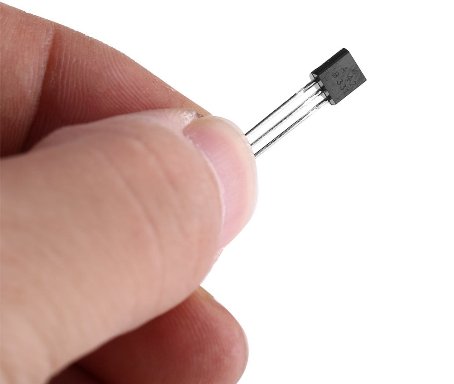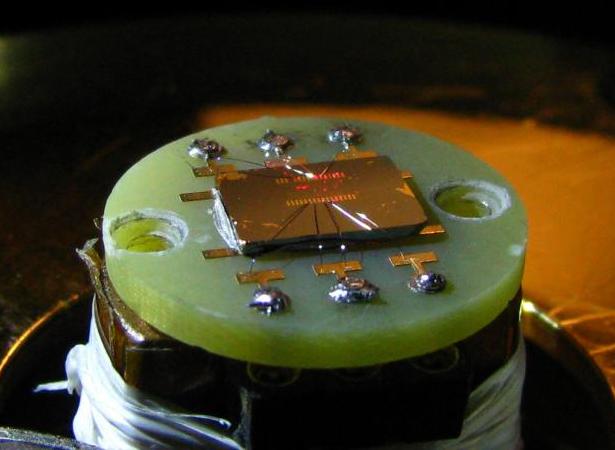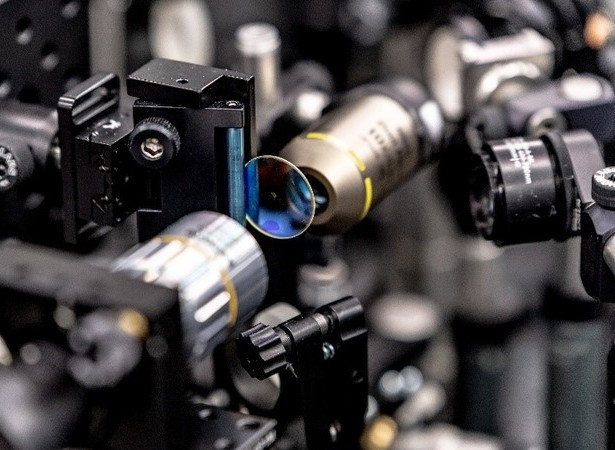Categories: Featured Articles » Interesting electrical news
Number of views: 1829
Comments on the article: 0
Optical Transistors - The Future of Electronics
Almost all technologies, although they tend to develop, eventually become obsolete. This pattern did not bypass silicon electronics. It is easy to notice that in recent years its progress has slowed significantly and generally changed the direction of its development.
The number of transistors in microchips no longer doubles every two years, as it was before. And today, computer performance is increasing not by increasing their operating frequency, but by increasing the number of cores in the processor, that is, by expanding the capabilities for parallel operations.

It's no secret that any modern computer is built from billions of small transistorsrepresenting semiconductor devices that conduct electric current when a control signal is applied.
But the smaller the transistor is, the more pronounced are the spurious effects and leaks that interfere with its normal operation and constitute an obstacle to creating even more compact and faster devices.
These factors determine the fundamental limit on the miniaturization of the size of the transistor, so a silicon transistor, in principle, cannot have a thickness of more than five nanometers.
The physical reason lies in the fact that electrons moving through a semiconductor waste their energy simply because these charged particles have mass. And the higher the frequency of the device is made, the greater the energy loss in it becomes.
With a decrease in the size of the element, although energy losses in the form of heat can be reduced, the influence of the atomic structure cannot be prevented. In practice, the atomic structure itself begins to become an obstacle, since the element size achieved by today of 10 nanometers is comparable in order of magnitude with just a hundred silicon atoms.
Electrons are replacing photons

But what if you try to use not current, but light? After all, photons, unlike electrons, have neither charge nor rest mass, and at the same time they are the fastest particles. Moreover, their flows at different wavelengths will not interfere with each other during synchronous operation.
Thus, with the transition to optical technologies in the field of information management, one could get many advantages over semiconductors (with heavy charged particles moving through them).
Information sent by means of a light beam could be processed directly in the process of its transmission, and energy expenditures would not be as substantial as when transmitted by a moving electric charge. And parallel calculations would be made possible by the applied waves of different lengths, and for the optical system, no electromagnetic interference would be fundamentally fearless.

The obvious advantages of the optical concept over the electric one have long attracted the attention of scientists. But today, computing optics remains largely hybrid, that is, combining electronic and optical approaches.
By the way The first prototype optoelectronic computer was created back in 1990 by Bell Labs, and in 2003, Lenslet announced the first commercial optical processor EnLight256, capable of performing up to 8,000,000,000 operations on 8-bit integers per second (8 teraop). But despite the steps already taken in this direction, questions still remained in the field of optical electronics.
One of these questions was as follows. Logical circuits imply the answer “1” or “0” depending on whether two events have occurred - B and A.But photons do not notice each other, and the response of the circuit should depend on two light beams.
Transistor logic, operating with currents, easily does this. And there are a lot of similar questions. Therefore, there are still no commercially attractive optical devices based on optical logic, although there have been some developments. So, in 2015, scientists from the laboratory of nanophotonics and metamaterials of ITMO University demonstrated in an experiment the possibility of manufacturing ultrafast optical transistorconsisting of just one silicon nanoparticle.
To this day, engineers and scientists of many institutions are working on the problem of replacing silicon with alternatives: they are trying graphene, molybdenum disulfide, are thinking about using particle spins and of course - about light, as a fundamentally new way of transmitting and storing information.
The light analog of the transistor is the most important concept, which consists in the fact that you need a device that can selectively pass or not pass photons. In addition, a splitter is desirable, which can break the beam into parts and remove certain light components from it.
Prototypes already exist, but they have a problem - their sizes are gigantic, they are more like transistors from the middle of the last century, when the computer age was just beginning. Reducing the size of such transistors and splitters is not an easy task.

Fundamental obstacle overcome
And meanwhile In early 2019, scientists from the Skolteha hybrid photonics laboratory, together with colleagues from IBM, nevertheless managed to build the first optical transistor capable of operating at a frequency of 2 THz and at the same time not requiring any cooling to absolute zero.
The result was obtained using the most complex optical system, which was created by the long painstaking work of the team. And now we can say that photonic processors that perform operations at the speed of light are, in principle, real, as real as fiber optic communication.
The first step has been taken! A miniature optical transistor that does not require cooling and is able to work thousands of times faster than its electronic semiconductor ancestor has been created.
As noted above, one of the fundamental problems in creating elements for light computers was that photons do not interact with each other, and it is extremely difficult to control the movement of light particles. However, scientists have found that the problem can be addressed by resorting to the so-called polaritons.
Polariton - One of the recently created virtual particles, like a photon, and capable of exhibiting the properties of waves and particles. The polariton includes three components: an optical resonator, consisting of a pair of reflector mirrors, between which a light wave is imprisoned, as well as a quantum well. A quantum well is represented by an atom with an electron rotating around it, capable of emitting or absorbing a quantum of light.

In the first experiments, the quasiparticle polariton showed itself in all its glory, showing that it can be used to create transistors and other logical elements of light computers, but there was one serious minus - work was possible only at ultralow temperatures near absolute zero.
But scientists have solved this problem. They learned how to create polaritons not in semiconductors, but in organic analogues of semiconductors, which retained all the necessary properties even at room temperature.
For the role of such a substance polyparaphenylene - a recently discovered polymer, similar to those used in the production of Kevlar and a variety of dyes.
Thanks to a special device, polyparaphenylene molecules can even generate special zones inside themselves that can fulfill the function of a quantum well of a classical polariton inside themselves.
Having enclosed a film of polyparaphenylene between layers of inorganic materials, scientists have found a way to control the state of a quantum well by forcing two different types of lasers and forcing them to emit photons.
An experimental prototype of the transistor demonstrated the ability to record fast switching and amplification of the light signal with minimal energy consumption.
Three of these transistors have already allowed researchers to assemble first logical lighting fixturesreproducing the operations "AND" and "OR". The result of the experiment suggests that the road to creation light computers- economical, fast and compact - finally open.
See also at i.electricianexp.com
:
